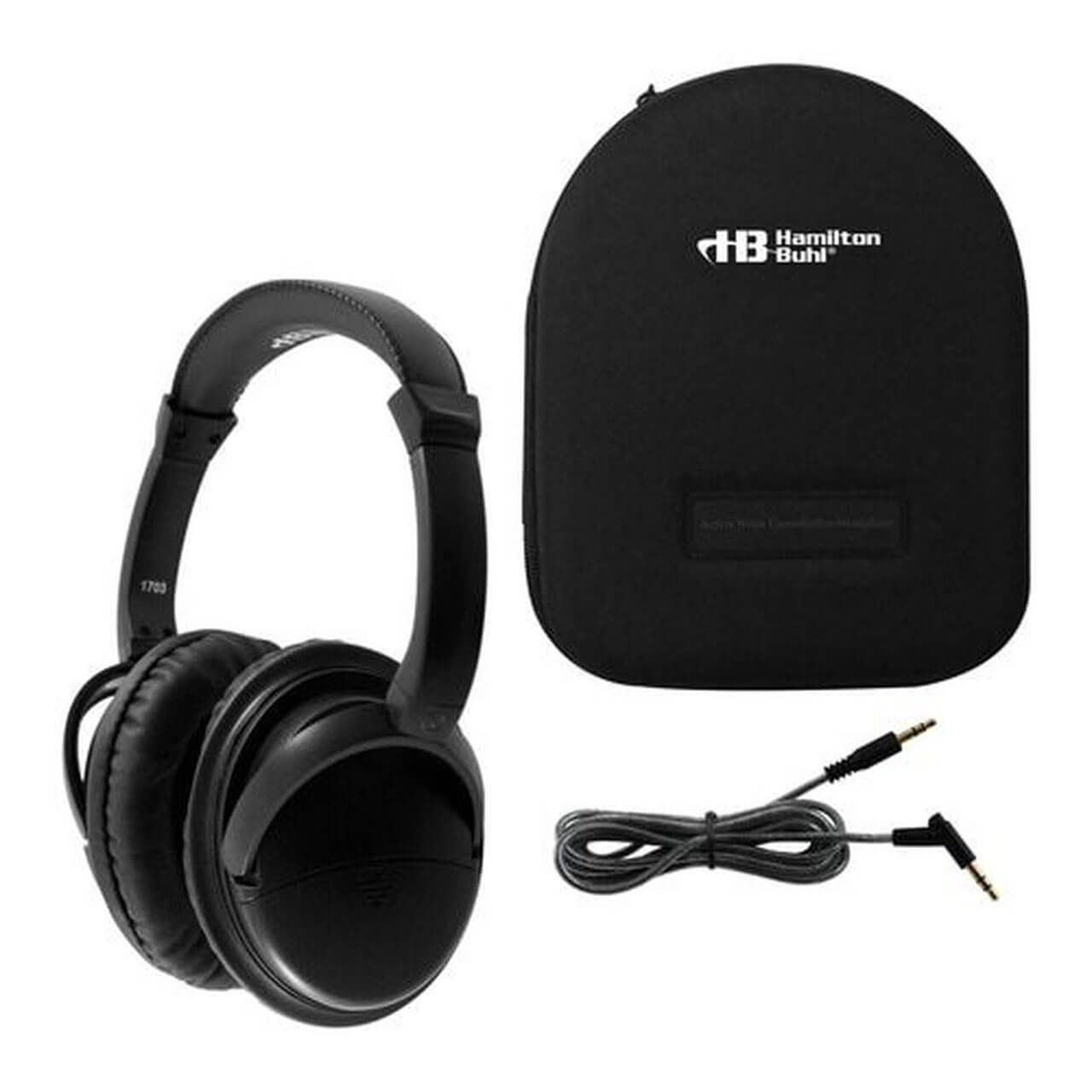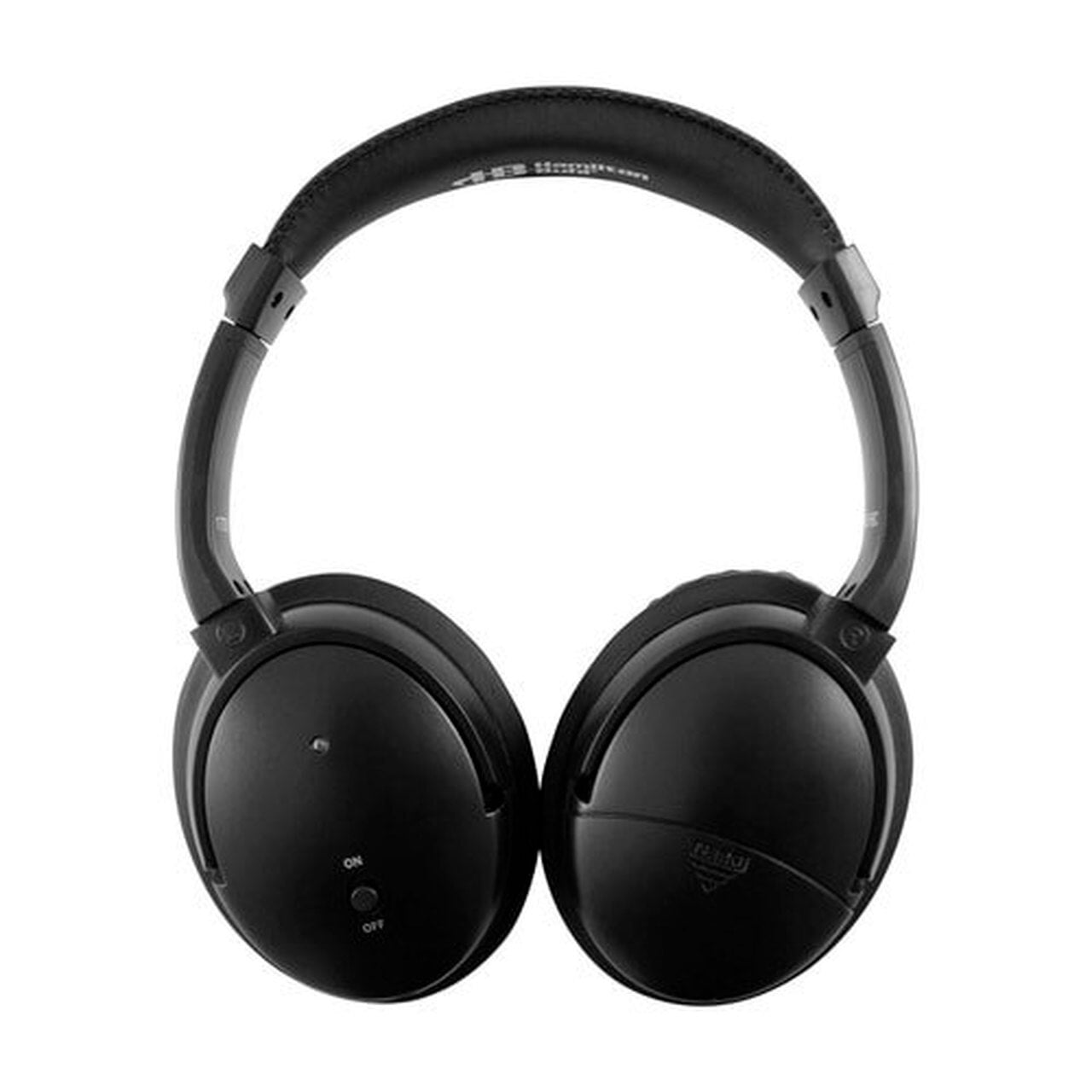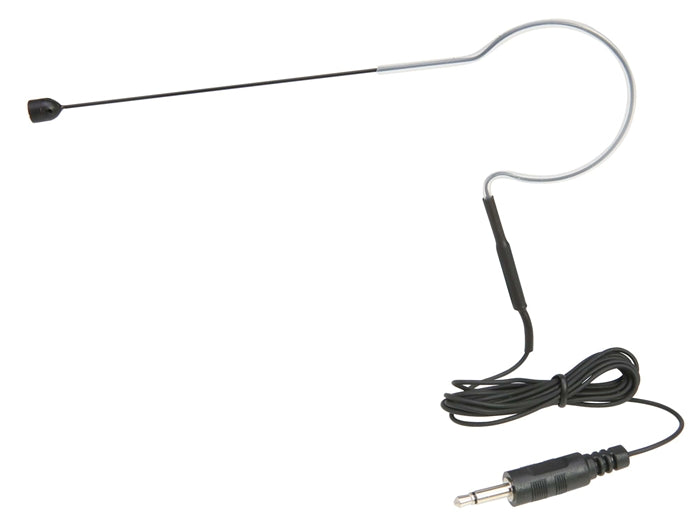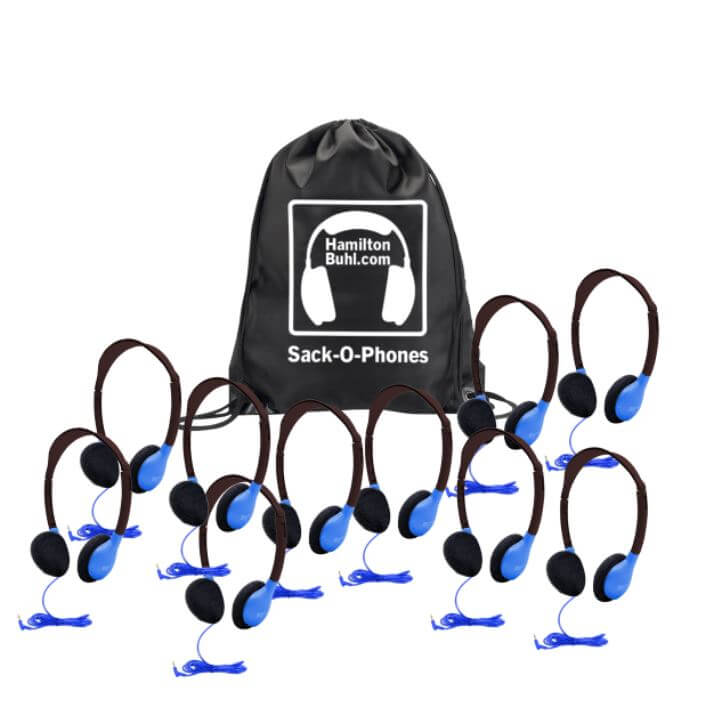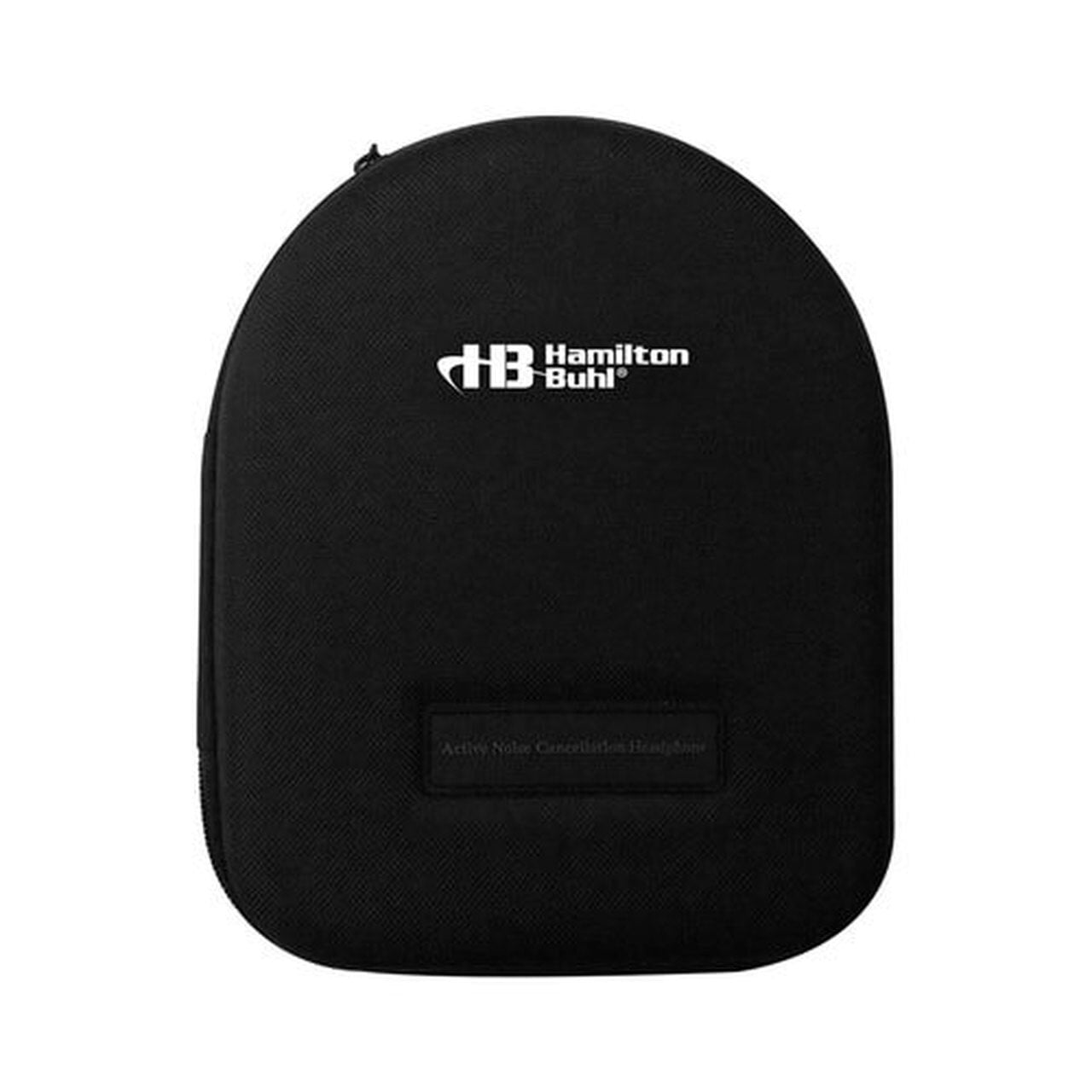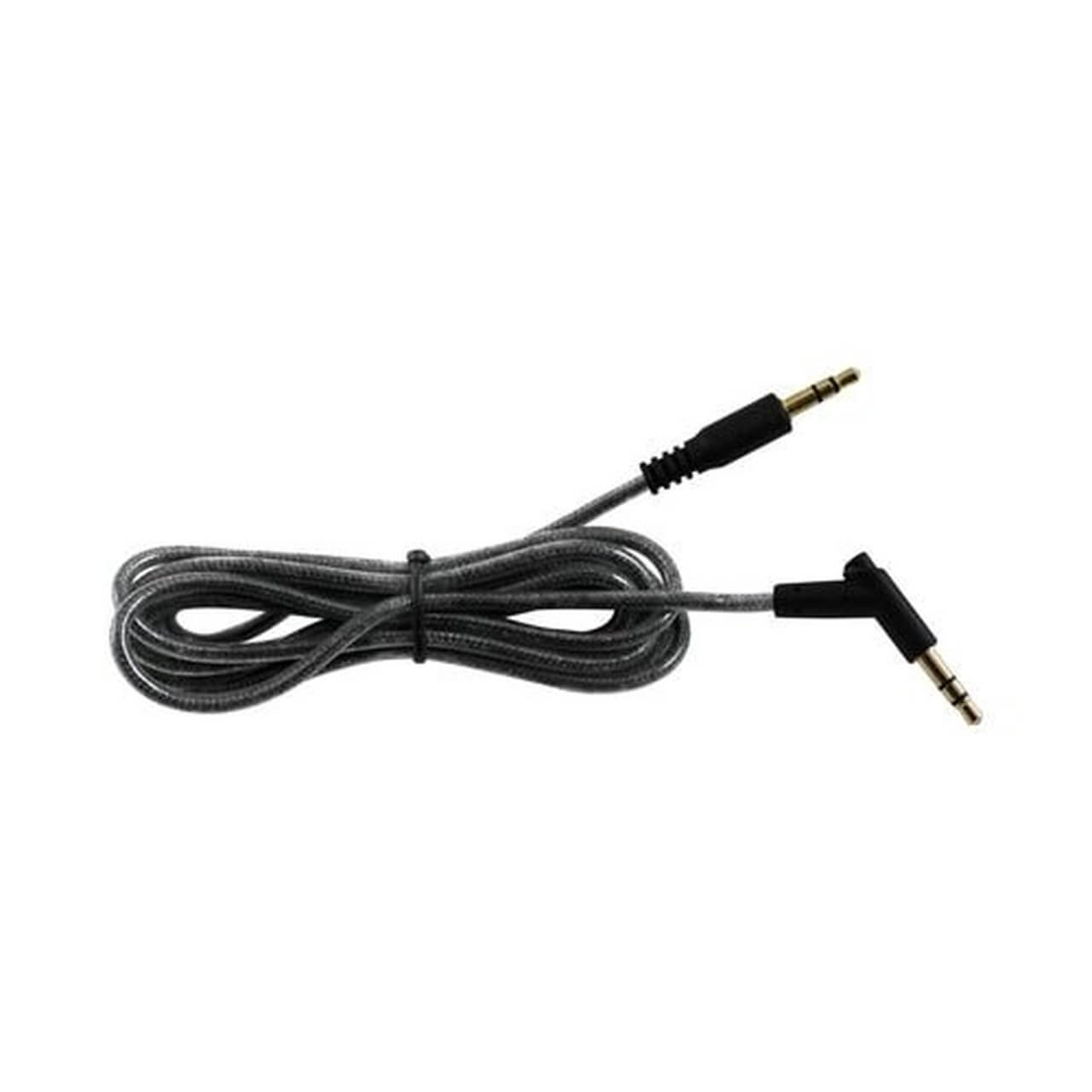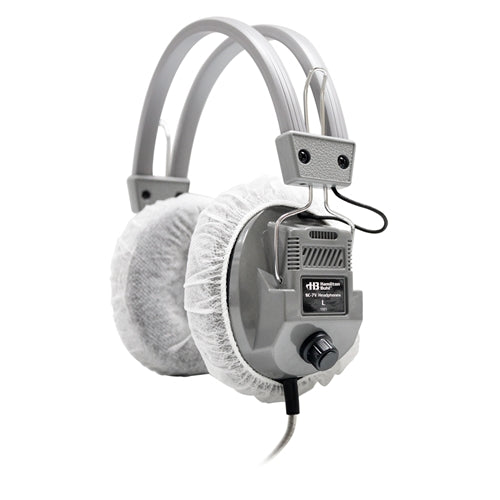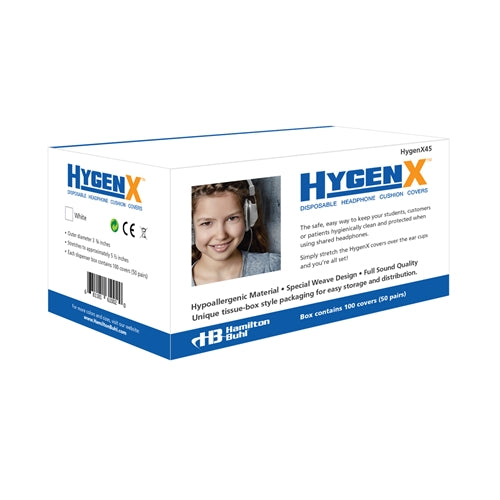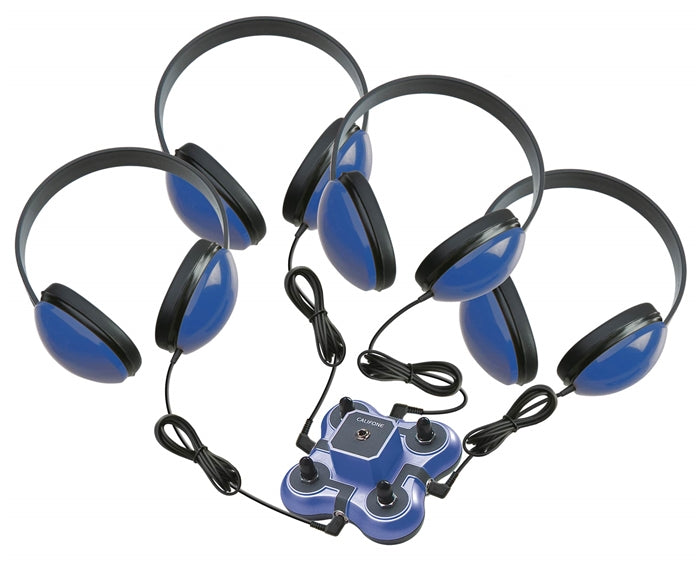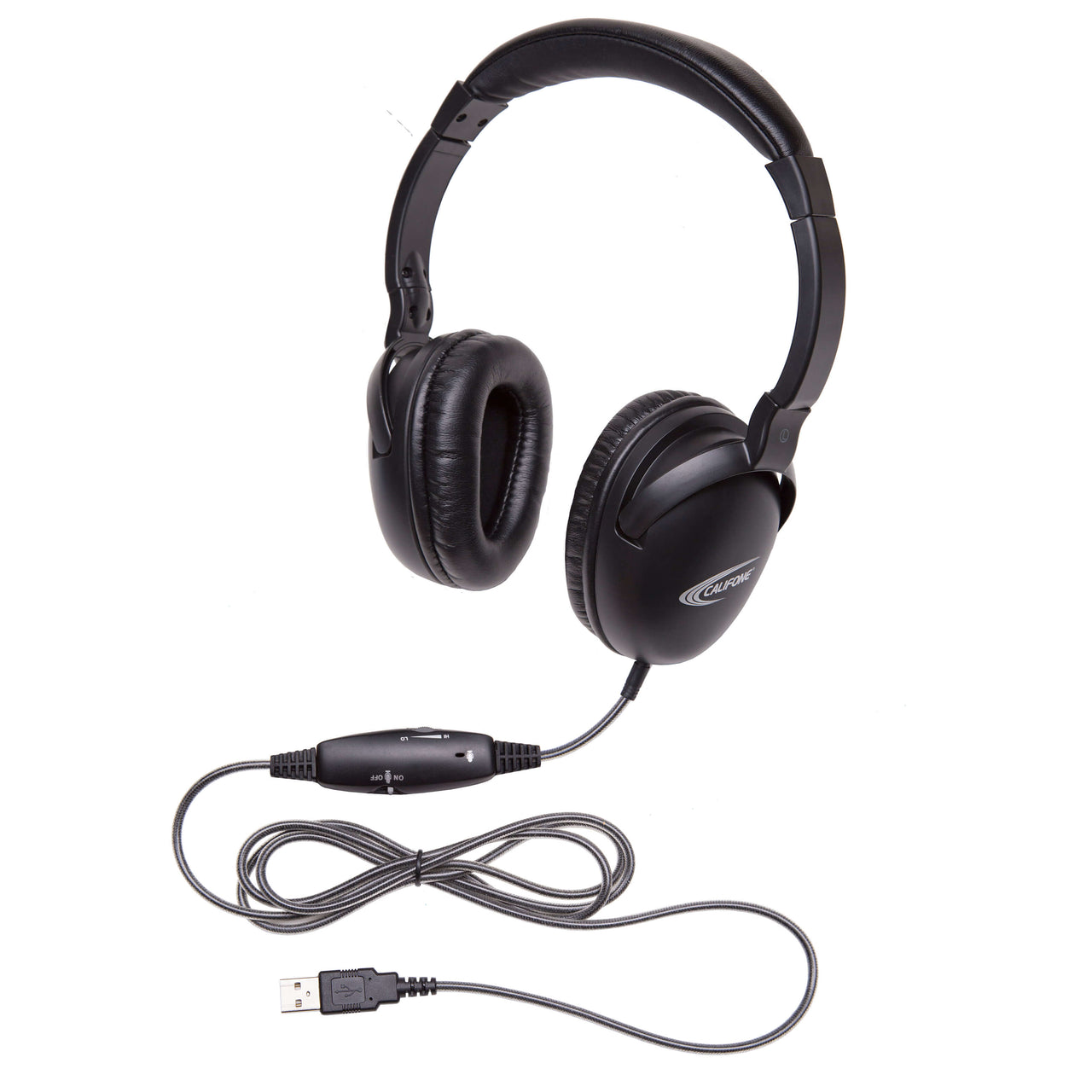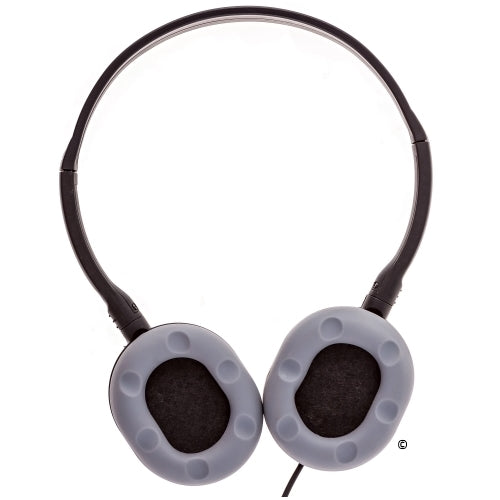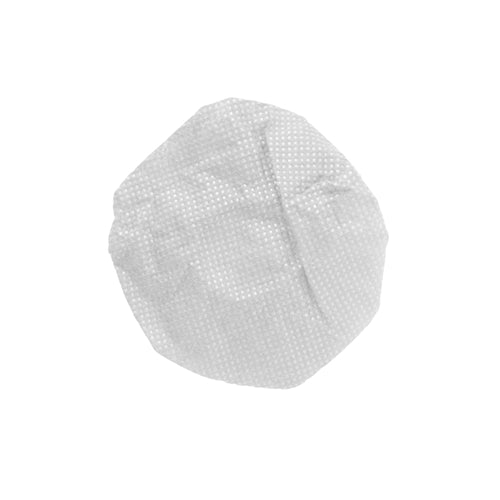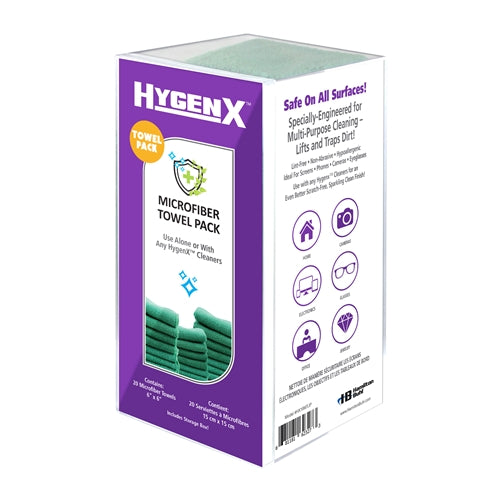Key Takeaways
- Speech therapy headphones should offer clear audio transmission and noise cancellation
- Comfort features like adjustable headbands and soft ear cushions are essential for extended therapy sessions
- Microphone quality is crucial for accurate speech assessment and feedback
- Durable construction is important for clinical and educational settings
- Proper hygiene practices with headphone covers can prevent cross-contamination
- USB connectivity provides better compatibility with modern therapy software and devices
Introduction to Speech Therapy Headphones
Speech therapy sessions require specialized audio equipment that can deliver clear sound while providing comfort during extended use. The right headphones can make therapy more effective by improving focus, reducing distractions, and enabling precise auditory feedback. Good headphones create a listening environment where both therapists and clients can concentrate on the small details of speech production and perception.
Dr. Emily Richardson, a leading speech-language pathologist at the National Speech Therapy Institute, notes: "Quality headphones are no longer optional in modern speech therapy practice. They've become essential tools that allow for precise auditory discrimination training and clear communication between therapist and client, especially in our increasingly digital therapeutic landscape."
Speech therapy professionals need headphones that offer great clarity, comfort, and durability. Whether you're doing in-person sessions or teletherapy appointments, the right headset can really help your clients improve. In this guide, we'll look at the best headphones for speech therapy applications, showing you what features matter most. We'll cover options for professional clinics and more affordable choices for schools, giving you practical recommendations based on real evidence.
Key Features to Consider in Speech Therapy Headphones
When picking headphones for speech therapy, several important features can really affect how well they work in therapy settings. Understanding these key elements will help you choose headphones that improve therapy results and last a long time.
1. Sound Quality and Clarity
Sound clarity is super important for speech therapy. Headphones with high-quality audio let therapists and clients hear small differences in speech sounds. Models with balanced sound ensure that all speech sounds come through clearly without distortion. This matters a lot when working on specific sounds that are hard to tell apart, like /s/ and /sh/ or /f/ and /th/. Professional headphones usually have better sound ranges that capture all the different parts of human speech.
Dr. Michael Torres, Director of Clinical Audiology at the Speech and Hearing Center, says: "For speech therapy to be effective, every phoneme must be clearly distinguishable. High-fidelity headphones with minimal distortion are essential, especially when working on subtle sound discriminations that can be challenging for clients with speech disorders."
The HamiltonBuhl Deluxe Active Noise-Cancelling Headphones have technology that blocks background noise. This helps clients focus on speech exercises without distractions. They cost $119.99 and have soft ear cushions for comfort during long therapy sessions. They come with a zippered case for storage and travel. These headphones can block up to 90% of background noise, creating a quiet space that's perfect for detailed speech work.
2. Microphone Quality
A good microphone is essential for accurate speech assessment and feedback. Headsets with noise-canceling microphones help isolate the client's voice from background noise, providing clearer recordings. The microphone should capture the full range of speech sounds, from the low sounds of vowels to the high sounds of consonants like /s/ and /f/. Adjustable microphone booms let you position the mic perfectly near the speaker's mouth for consistent audio capture.
The Over-ear Mic headset is made for clear audio transmission, making it great for speech therapy. This light headset works with various Califone® PA systems, so it's versatile for different therapy setups. It's comfortable enough to wear for long therapy sessions. Its directional microphone captures speech clearly while reducing background noise, which is perfect for detailed articulation work and recording speech samples.
The EDU-255 USB On-Ear Stereo Computer Headset has a special noise-canceling microphone that isolates speech for clear recordings. The durable microphone arm swivels so you can position it perfectly, ensuring good audio quality throughout your session. This USB headset works great with digital therapy platforms and recording software, making it especially useful for teletherapy and computer-based therapy programs that need high-quality audio input.
3. Comfort and Adjustability
Speech therapy sessions can last a long time, so comfort is really important. Headphones with adjustable headbands, cushioned ear cups, and lightweight designs prevent discomfort during long sessions. Features like padded headbands spread the weight evenly across the head, while ear cups that pivot fit different head shapes for a secure but comfortable fit. For kids, properly sized headphones with the right amount of pressure are essential to prevent discomfort that could distract them from therapy activities.
The School Headphone with Soft Grey Earcup LH-55 offers an affordable option at just $29.99 while still being comfortable. These headphones are lightweight with rotating earcups for easy storage. Each headphone is individually packaged for cleanliness, which is important in settings where multiple people use the same equipment. The adjustable headband fits various head sizes, making these headphones good for both children and adults in school therapy settings.
Dr. Sarah Johnson, pediatric speech therapist, notes: "Comfort isn't just about patient satisfaction—it directly impacts therapeutic outcomes. When clients are uncomfortable, they become distracted and less engaged in therapy exercises. Adjustable headphones that can accommodate different head sizes and ear shapes are essential, especially when working with children."
Top Headphone Recommendations for Speech Therapy
Based on how well they work in therapy, how long they last, and their value for money, here are our top recommendations for speech therapy headphones. These picks represent the best options at different price points for various settings, from professional clinics to schools and teletherapy.
Professional-Grade Options for Clinics and Schools
The Califone 2021MT Headset is a favorite among speech therapists because of its great sound quality with special speakers that deliver exceptional clarity. It fits comfortably with an adjustable padded headband that works for people of all ages. Its flexible microphone can be positioned on either side to capture speech accurately. It comes with a 3-year warranty, which is reassuring for busy clinics. The reinforced connection points and tough plastic construction ensure it lasts a long time even in busy clinics where equipment might get rough handling.
For digital therapy, the Smart-Trek USB Deluxe Headset ($39.99) works with all computers and digital devices through USB. It's built for comfort and durability, perfect for classrooms and clinics. The headset also has anti-lice protection, which is important for schools where headphones might be shared. The built-in volume control lets clients adjust sound levels to their comfort without changing system settings, giving them more control during therapy while maintaining consistent recording levels for the therapist's assessment.
Clinical audiologist Dr. Rebecca Martinez states: "The Califone 2021MT has become our clinic standard due to its exceptional durability and sound quality. The adjustable microphone boom allows precise positioning for accurate speech capture, which is crucial for our articulation therapy and phonological assessments."
Budget-Friendly Options for Group Settings
For group therapy or classroom settings, the Sack-O-Phones 10 Pack HA2 School Headphones ($49.99) gives you great value. This set includes 10 personal headphones with foam earcups and a handy carry bag. These headphones work with any computer or mobile device with a standard headphone jack and have adjustable headbands for comfort. At less than $5 per headset, they're affordable for schools and clinics with tight budgets that need to equip multiple therapy stations or provide take-home equipment for practice.
The HamiltonBuhl Sack-O-Phones Blue Headphones ($59.99) offers 10 personal-sized blue headphones in a unique bag that doubles as a backpack. These light, strong headphones are designed for all-day comfort and come with a 1-year warranty. The blue color can be useful in classrooms where different therapy groups might need different colored equipment. The strong construction and replaceable ear cushions help these headphones last longer, making them a good choice for schools.
Speech therapist and educational consultant Maria Rodriguez explains: "For school-based speech therapists working with multiple students throughout the day, having a set of reliable, easy-to-clean headphones is essential. The Sack-O-Phones sets have been a game-changer for our district's therapy program, allowing us to equip multiple therapy stations without breaking our budget."
Specialized Features for Speech Therapy Applications
Noise Cancellation Technology
Noise cancellation is really valuable in speech therapy settings where distractions can slow down progress. Active noise cancellation (ANC) technology, like in the HamiltonBuhl Deluxe Active Noise-Cancelling Headphones, creates a more focused environment for therapy exercises. This technology uses tiny microphones to detect outside noise and then creates sound waves that cancel out that noise before it reaches your ears. This creates a quiet space that helps clients focus completely on speech production and listening tasks.
Dr. James Wilson, researcher at the Center for Speech and Language Development, explains: "Noise cancellation technology has revolutionized speech therapy for clients with auditory processing disorders and attention difficulties. By reducing background noise, these headphones create an optimal acoustic environment that allows clients to focus solely on the speech sounds they're working to master."
The HamiltonBuhl headphones use advanced noise-canceling technology to filter out background sounds while keeping audio clear. Their soft ear cups provide extra noise blocking, creating an immersive therapy environment even in busy clinics or schools. The rechargeable battery lasts up to 15 hours, enough for a full day of therapy sessions without needing to recharge.
Hygiene Solutions for Shared Equipment
In clinics and schools where headphones are shared among multiple people, cleanliness is super important. The HygenX Sanitary Ear Cushion Covers ($20.00) provide an effective solution for keeping headphones clean and preventing the spread of germs. These disposable covers create a barrier that prevents direct contact between the headphone cushions and the user's skin, reducing the risk of spreading skin conditions, lice, or other contagious issues between clients.
These disposable covers are perfect for shared environments and have a special weave design that doesn't affect sound quality. Each box contains 50 pairs of covers, providing a cost-effective hygiene solution for busy practices. The stretchy material fits various headphone sizes and styles, making them compatible with most over-ear headphone models used in speech therapy.
Infection control specialist Dr. Lisa Chen recommends: "Regular disinfection of shared headphones is essential, but disposable covers provide an additional layer of protection that's particularly important when working with immunocompromised clients or during cold and flu season. The HygenX covers are an investment in both client safety and equipment longevity."
Setting Up Optimal Listening Environments for Therapy
Creating an effective listening environment goes beyond just picking the right headphones. Here are more things to consider for optimizing speech therapy sessions that address both the physical setup and technology aspects of the therapy environment.
Multi-Person Listening Centers
For group therapy sessions, the 6-Person Listening Center with Bluetooth CD-Cassette-FM Boombox ($249.99) provides a complete solution. This system supports multiple audio formats including Bluetooth, CD, cassette, and FM radio, offering flexibility for different therapy approaches. The multi-format capability allows therapists to use both commercial therapy materials and custom-recorded exercises made for specific client needs, providing flexibility in planning and doing therapy.
The center includes six deluxe over-ear headphones, making it perfect for small group activities. Its portable and tough design makes it suitable for classroom use or mobile therapy services. The system allows multiple clients to listen to the same audio source at once, making group activities possible while ensuring each person receives clear, consistent audio. The jackbox has individual volume controls for each headphone output, accommodating clients with different hearing sensitivities while maintaining the quality of the therapy material.
Speech-language pathologist Dr. Thomas Brooks notes: "Group therapy sessions can be incredibly effective for certain speech and language goals, particularly social communication skills. A quality listening center allows therapists to conduct synchronized listening activities while maintaining the audio clarity needed for effective intervention."
Digital Integration for Teletherapy
With the growth of teletherapy, digital connection features have become more important for speech therapy headphones. USB connectivity, like in the Smart-Trek USB Deluxe Headset, ensures compatibility with various digital platforms used for remote therapy sessions. This plug-and-play functionality eliminates the need for extra adapters or setup, making teletherapy technically simpler for both therapists and clients.
Digital headsets with built-in volume controls let clients adjust sound levels to their comfort, which is especially important for those with hearing sensitivities. Built-in microphones with noise-cancellation technology ensure that speech samples are captured clearly, even in noisy home environments. USB headsets often provide better audio quality than analog ones, with features like automatic volume adjustment that keeps recording levels consistent regardless of how loud the speaker is or how far they are from the microphone.
Teletherapy specialist Dr. Amanda Rodriguez emphasizes: "The quality of audio equipment can make or break a teletherapy session. Clear, reliable audio transmission is essential for accurate assessment and effective intervention, especially when working on subtle articulation differences or auditory discrimination tasks."
For more information on maintaining your audio equipment for optimal performance in language learning settings, visit our guide to essential audio equipment care.
Headphones for Different Age Groups and Therapy Needs
Pediatric Considerations
Children need headphones that are the right size for smaller heads and have volume-limiting features to protect their hearing. The School Headphone with Soft Grey Earcup LH-55 is designed with these needs in mind, offering a lightweight design that's comfortable for younger users. The adjustable headband grows with children, while the tough construction stands up to the sometimes rough handling that happens with kids. The soft ear cushions provide comfort without creating too much heat or pressure that might distract children from therapy activities.
Pediatric speech therapist Dr. Jennifer Miller advises: "When selecting headphones for children, size and weight are critical factors. Oversized headphones can slip and cause frustration, while heavy models cause fatigue. Look for adjustable headbands that can grow with the child and cushioned ear cups that provide comfort without putting pressure on developing ear structures."
For safety with kids, it's also important to consider headphones with tangle-resistant cords or wireless options that eliminate choking hazards. Also, volume-limiting features prevent exposure to loud sounds that could damage hearing during therapy exercises. Models with built-in volume limiters that cap sound output at 85dB provide an extra safety measure for kids who might not control volume properly themselves.
Specialized Options for Sensory Sensitivities
People with sensory processing disorders or autism may have specific headphone needs. Features like pressure-distributing headbands, extra-soft ear cushions, and adjustable settings can make therapy sessions more comfortable and effective for these individuals. Some clients may be very sensitive to certain sound frequencies or volumes, needing headphones with customizable sound settings that can be adjusted to their specific comfort needs. Others may have touch sensitivities that require specific materials or cushion designs that don't irritate them.
The HamiltonBuhl Deluxe Active Noise-Cancelling Headphones offer excellent sensory help through their noise-cancellation technology, helping to reduce overwhelming environmental sounds that can trigger sensory overload. The adjustable noise cancellation levels allow therapists to create a customized sensory environment that provides enough sound for therapy activities while filtering out potentially overwhelming background noise. The soft ear cushions create a gentle but effective seal around the ears, providing additional noise blocking without creating uncomfortable pressure.
Occupational therapist and sensory specialist Dr. Rachel Thompson explains: "For clients with sensory sensitivities, the right headphones can be both therapeutic tools and comfort devices. Active noise-cancellation can help reduce sensory overload, while plush ear cushions minimize tactile discomfort that might otherwise distract from therapy goals."
For additional information on safely using audio equipment with sensitive populations, check out our safety tips for using educational earbuds.
Maintenance and Care for Speech Therapy Headphones
Proper maintenance extends the life of headphones and ensures consistent performance across therapy sessions. Here are essential care practices for clinical settings that address both cleanliness concerns and equipment durability considerations.
Cleaning and Sanitization Protocols
Regular cleaning and sanitization are essential in clinical settings where headphones may be used by multiple clients. Disposable covers like the HygenX Sanitary Ear Cushion Covers provide a convenient solution for maintaining hygiene between sessions. These covers create an effective barrier against oils, sweat, and potential germs without significantly affecting sound quality or comfort. For practices with many clients, disposable covers offer a time-saving alternative to thorough cleaning between each use, while still maintaining good infection control standards.
For more thorough cleaning, non-alcohol disinfectant wipes can be used on ear cushions and headbands. Microphone booms should be cleaned with special electronic cleaning products to prevent moisture damage while killing germs. It's important to follow manufacturer guidelines for cleaning, as some disinfectants may damage certain materials or electronic parts. Setting up a regular cleaning schedule that includes both daily quick sanitization and weekly deep cleaning helps maintain equipment hygiene without hurting functionality.
Infection control specialist Dr. Mark Thompson recommends: "Establish a regular cleaning schedule for all therapy equipment, including headphones. In high-volume practices, consider daily disinfection with medical-grade products that are effective against a broad spectrum of pathogens without damaging electronic components."
Storage and Handling Best Practices
Proper storage extends the life of headphones and prevents damage between uses. Products like the HamiltonBuhl Deluxe Active Noise-Cancelling Headphones include zippered carry cases that protect the equipment during storage and transport. These hard cases prevent crushing damage and keep dust and moisture away from sensitive electronic parts. For headphones without included cases, investing in good storage solutions can significantly extend their useful life and maintain consistent performance quality.
For multiple sets of headphones, storage solutions like the Sack-O-Phones carry bag keep equipment organized and protected. These bags allow for proper cord management, preventing tangling and wire damage that can lead to audio problems. Designated storage areas with appropriate temperature control help prevent damage from extreme temperatures or too much humidity, which can affect both electronic components and cushioning materials over time.
Clinical director Dr. Emily Parker suggests: "Designate specific storage areas for therapy equipment and train all staff on proper handling procedures. Simple practices like using cord wraps and storing headphones on stands rather than flat surfaces can significantly extend their functional lifespan."
For comprehensive guidance on maintaining your audio equipment, visit our detailed guide on essential audio equipment care for language learning success.
The Impact of Quality Headphones on Therapy Outcomes
Expert Insight: The Technology-Therapy Connection
"The quality of audio equipment used in speech therapy directly impacts treatment efficacy. High-fidelity headphones with proper noise isolation create an optimal acoustic environment for developing phonological awareness, auditory discrimination, and articulation skills. In our clinical research, we've observed significantly faster progress when therapy is conducted using professional-grade headphones compared to consumer models or no headphones at all."
— Dr. Elizabeth Chen, Ph.D., CCC-SLP, Director of Clinical Research at the National Institute for Communication Disorders
Research shows that the quality of audio equipment used in speech therapy can significantly impact treatment outcomes. Clear, consistent audio delivery improves auditory processing and discrimination abilities, particularly for clients working on subtle sound distinctions. This is especially relevant for therapy targeting specific speech sounds that require precise listening, such as minimal pair contrast therapy or phonological awareness training. The acoustic environment created by quality headphones allows clients to focus on these subtle distinctions without the interference of background noise or sound distortions.
A recent study by the American Speech-Language-Hearing Association found that therapy sessions conducted with high-quality headphones showed a 27% improvement in client engagement and a 35% increase in accurate phoneme discrimination compared to sessions without specialized audio equipment. These significant improvements translate to more efficient therapy progress and potentially shorter overall treatment times, benefiting both clients and therapists. The improved engagement observed with quality audio equipment is particularly valuable for kids or those with attention difficulties who might otherwise struggle to stay focused during therapy activities.
Dr. Robert Williams, leading researcher in speech technology integration, notes: "The technological tools we use in therapy aren't merely accessories—they're essential components of the intervention itself. Quality headphones create a controlled acoustic environment that allows clients to focus on specific speech elements without environmental distractions, accelerating progress toward communication goals."
For more insights on how audio technology enhances learning outcomes, explore our article on how music aids student learning.
Conclusion: Investing in Communication Success
Choosing the right headphones for speech therapy is an investment in therapeutic outcomes and client progress. The best options combine clarity, comfort, durability, and appropriate features for specific therapy applications. While cost may be a consideration, especially for programs with limited budgets, the long-term benefits of quality equipment in terms of therapy effectiveness and equipment longevity often justify the investment in professional-grade options.
Whether you're setting up a clinical practice, school speech program, or teletherapy service, consider the specific needs of your client population and therapy approaches when selecting headphones. Professional-grade options like the Califone 2021MT Headset and Smart-Trek USB Deluxe Headset offer the performance and durability needed for intensive therapy applications, while budget-friendly alternatives like the School Headphone with Soft Grey Earcup provide accessible solutions for larger programs. The right choice depends on factors including client ages, therapy types, how often they'll be used, and specific environment considerations for your practice setting.
By prioritizing audio clarity, comfort, and appropriate features, speech therapists can create optimal listening environments that enhance client engagement and accelerate progress toward communication goals. Explore our complete collection of headphones and school headsets for iPad to find the perfect solution for your speech therapy needs.
For additional resources on optimizing speech therapy technology, visit our specialized guide on speech therapy headphones and learn about safety tips for using educational audio equipment.




